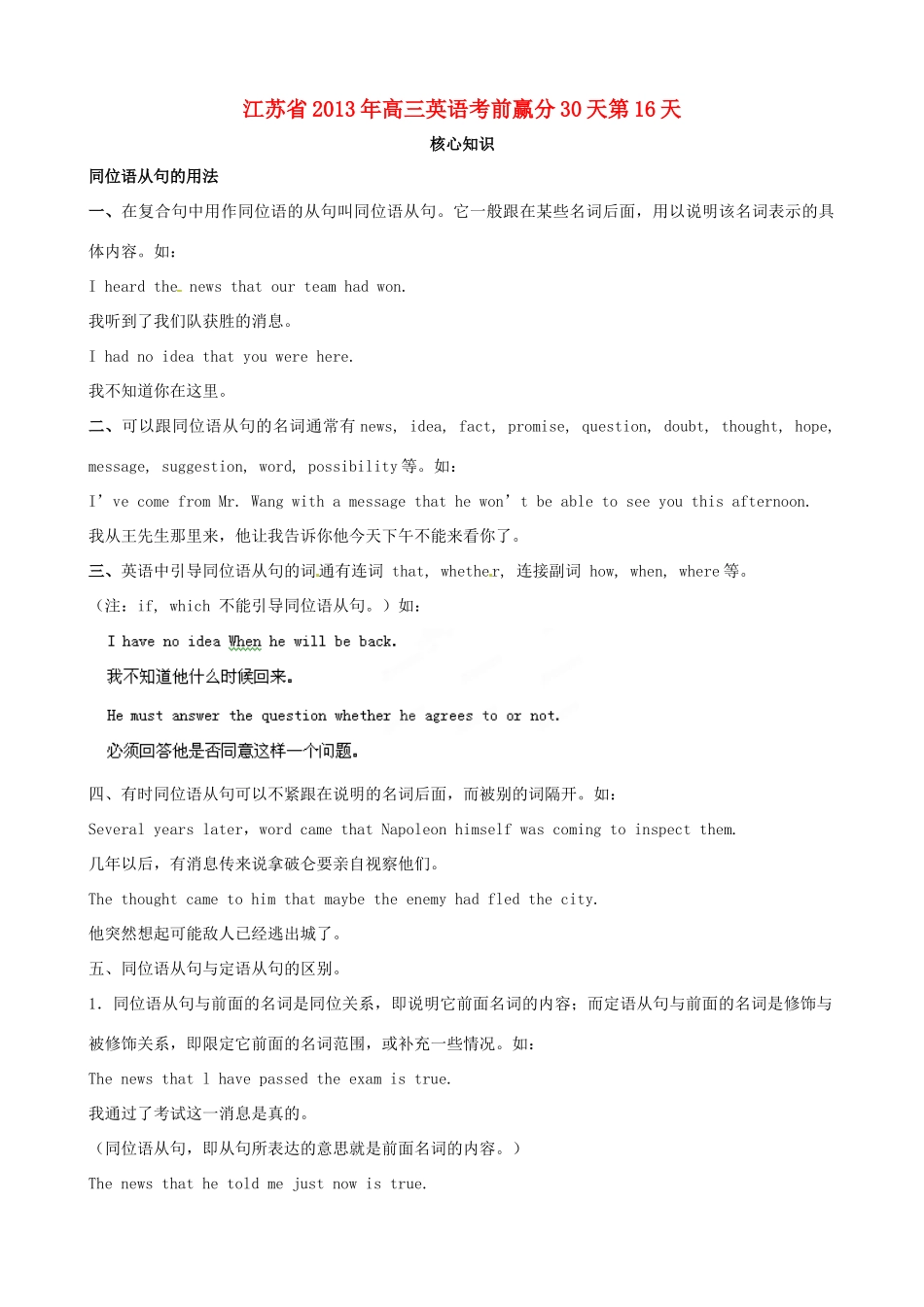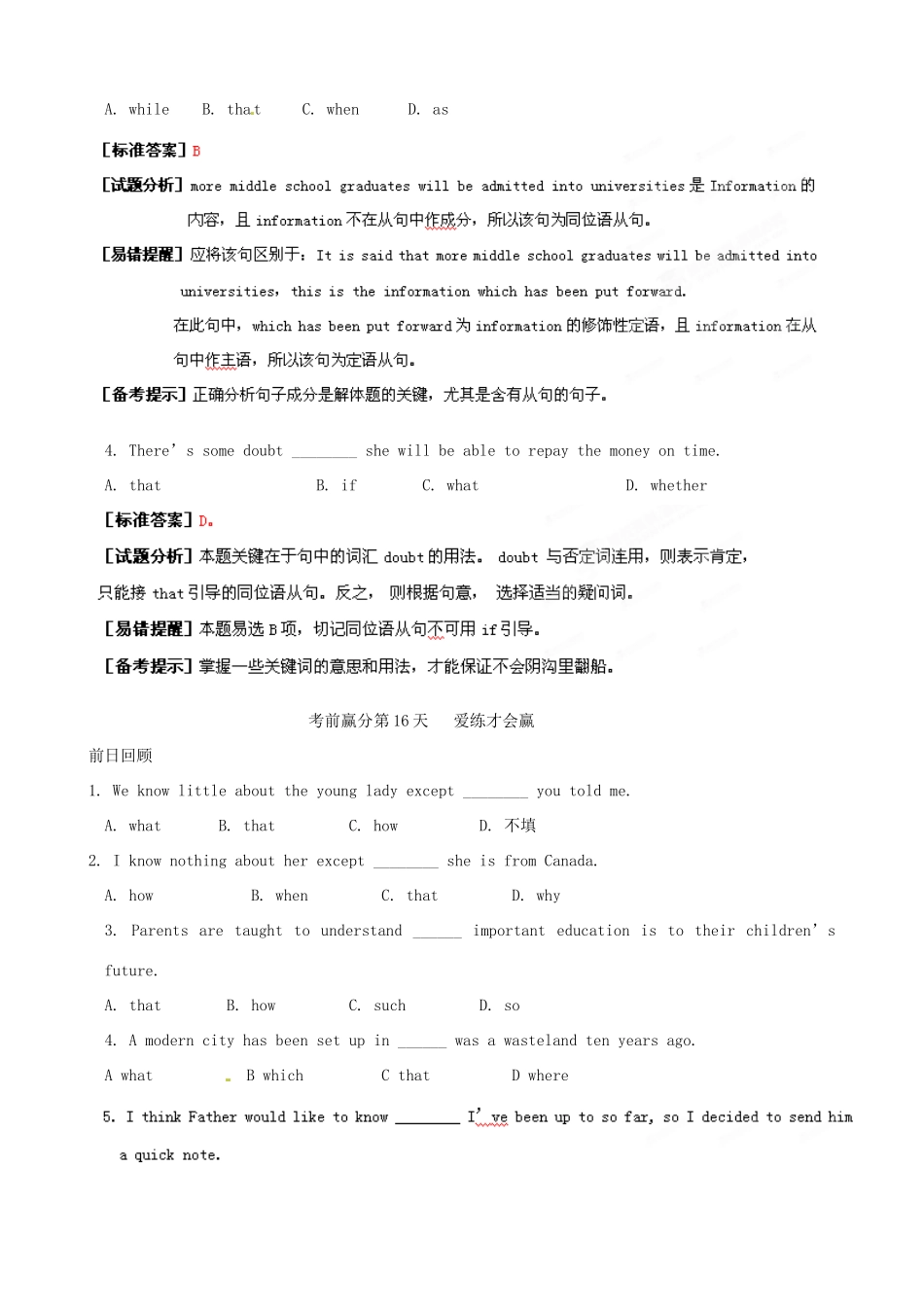江苏省 2013 年高三英语考前赢分 30 天第 16 天核心知识同位语从句的用法一、在复合句中用作同位语的从句叫同位语从句。它一般跟在某些名词后面,用以说明该名词表示的具体内容。如: I heard the news that our team had won.我听到了我们队获胜的消息。 I had no idea that you were here.我不知道你在这里。 二、可以跟同位语从句的名词通常有 news, idea, fact, promise, question, doubt, thought, hope, message, suggestion, word, possibility 等。如:I’ve come from Mr. Wang with a message that he won’t be able to see you this afternoon.我从王先生那里来,他让我告诉你他今天下午不能来看你了。三、英语中引导同位语从句的词通有连词 that, whether, 连接副词 how, when, where 等。(注:if, which 不能引导同位语从句。)如:四、有时同位语从句可以不紧跟在说明的名词后面,而被别的词隔开。如:Several years later,word came that Napoleon himself was coming to inspect them.几年以后,有消息传来说拿破仑要亲自视察他们。The thought came to him that maybe the enemy had fled the city.他突然想起可能敌人已经逃出城了。五、同位语从句与定语从句的区别。 1.同位语从句与前面的名词是同位关系,即说明它前面名词的内容;而定语从句与前面的名词是修饰与被修饰关系,即限定它前面的名词范围,或补充一些情况。如:The news that l have passed the exam is true.我通过了考试这一消息是真的。(同位语从句,即从句所表达的意思就是前面名词的内容。)The news that he told me just now is true.他刚才告诉我的消息是真的。(定语从句,从句对前面名词起修饰限制作用,即“他告诉我的”那个消息,而不是别的消息。)经典例题1. A story goes ______ Elizabeth I of England liked nothing more than being surrounded by clever and qualified noblemen at court.A. when B. where C. what D. that2. Last Sunday he made a promise ____ he was free he would take me to the Museum.A. if B. that C. that if D. whether[标准答案]C。3. Information has been put forward ____ more middle school graduates will be admitte...


